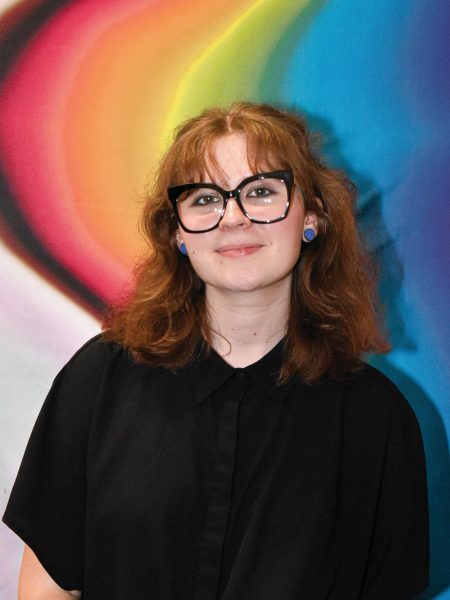Ohio’s Senate Bill 1, the Advance Ohio Higher Education Act, went into effect June 27, calling to alter Diversity, Equity and Inclusion (DEI) policies at universities across the state.
In order to comply with the new regulations, universities must prohibit DEI trainings during orientations and discontinue existing DEI offices and DEI-related scholarships. If a university fails to meet these standards, the state is permitted to withhold or reduce state funding.
According to Ohio’s Department of Higher Education, schools have until Sept. 25 to update DEI policies and change or eliminate programs.
For Kent State, this means many changes happened over the summer. One of the changes left DEI offices on campus empty and closed: the LGBTQ+ Center, Multicultural Center and Women’s Center.
Florence Hite, a sophomore art history major, was an intern at the LGBTQ+ Center for two years, primarily working on social media outreach and helping facilitate some of the center’s “safe space” trainings.
On June 26, social media accounts associated with the campus resource centers posted an “account update” image announcing the closure of the accounts.
“We had a very large social media – it reached 43,000 people a month – but that’s now gone,” they said.
Hite said while the programming and social media resources are visibly missing, the physicality of the centers might be a bigger loss.
Many people did know of the center’s existence, but those who didn’t frequent it don’t know the importance of it, Hite explained.
“It was something like 8,000 contacts a semester, which is a lot of people in that space,” they said. “A lot of times, they weren’t seeking LGBTQ+ resources. Sometimes they were just there to study with friends, eat food, take a nap. They had a space that felt safe to do those things that some of us just take for granted.”
Hite said coming back after SB1 leaves them with an empty feeling, partly because of the closure of these centers.
“It’s such an absence, but everyone seems to be saying that it’s just like life goes on as usual,” Hite said. “It’s really weird because I’ve known this for so long that it’s like, ‘Where is this?’”
Although some aspects of the community remain, Hite said, it might still be limited, and incoming students might not carry that same level of community with them.
Operations and programming sponsored by the DEI centers also had to end.
Most notably, the LGBTQ+ Living Learning Community, previously located in Korb and Leebrick residential halls, has closed; and for the first time in nearly two decades, the Kupita/Transiciones (K/T) orientation for incoming students of color did not take place.
Za’Nya Henderson, junior integrated language arts major, started making plans for a chapter of the NAACP at Kent State last semester, but the future of SB1 gave her some concerns.
“My worry was whether we would be able to even have the chapter on campus, but also how the people around would feel about it,” she said.
Henderson, who started a youth chapter of the NAACP at her high school, said it was scary starting one at Kent State because of the political climate.
“I mean, I’m happy to be doing what I’m doing – and I think it’s really important – but I think it’s scary,” she said. “I think that it feels like you have a bunch of eyes on you.”
Students are feeling displaced, she said.
“A lot of the programs that we had in place for students to feel at home and to continue on that mentorship and whatnot are now gone,” Henderson said.
K/T is just one of the cuts.
“It was just an opportunity to find people – find people who made you feel safe and comfortable,” she said. “They would talk about the resources that they had to offer, the scholarships that the university had and they would be able to find a mentor.”
Now that it’s gone, a lot of first-year students are left in the dark, Henderson said.
But this is not the end, she said. SB1 is not in full effect yet.
“Now it’s just more so focusing on the students – how are we going to navigate all of the restrictions that are now put in place?” she said. “How do we move forward? How do we get the resources to do the stuff that we want to do – the stuff that we need to do?”
Ari Collins is a beat reporter. Contact her at [email protected].



